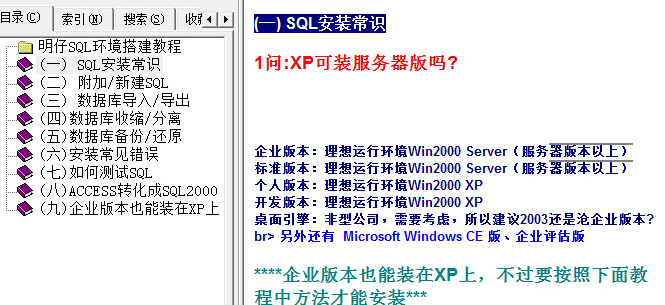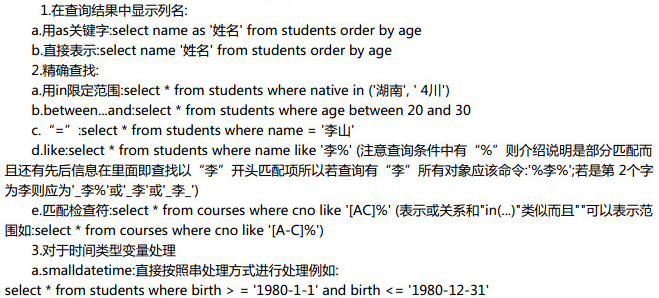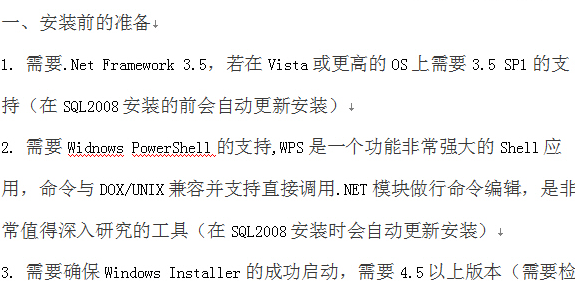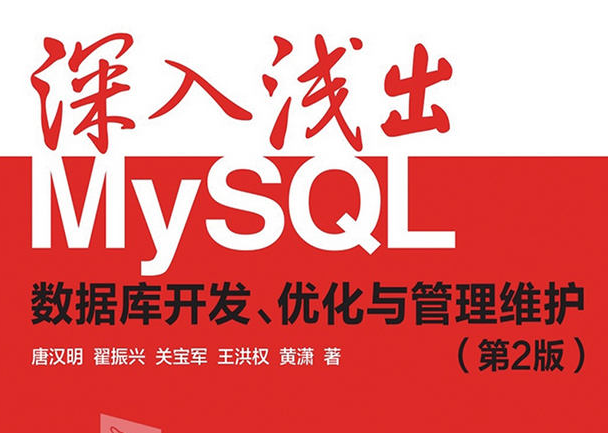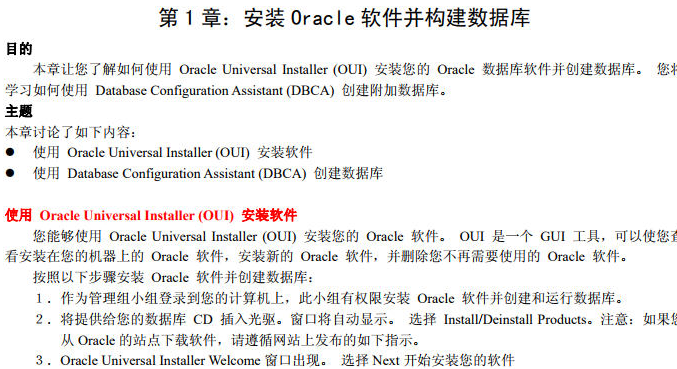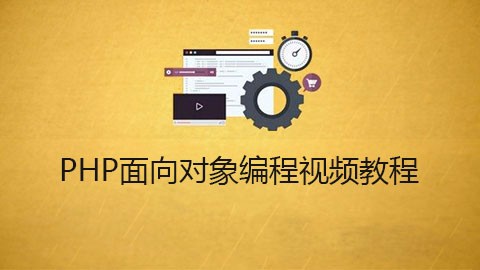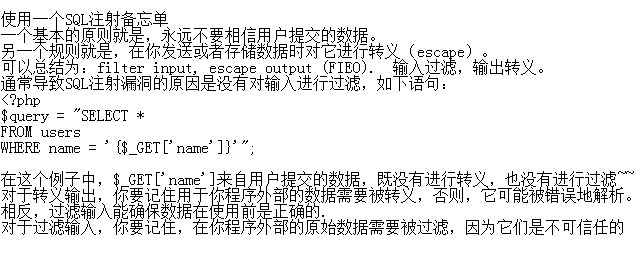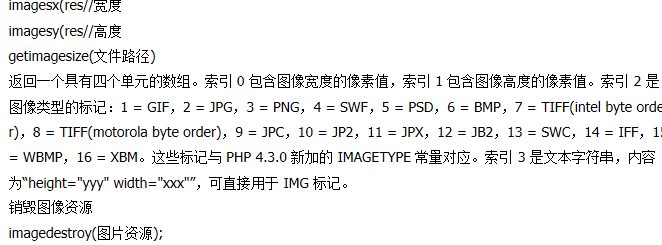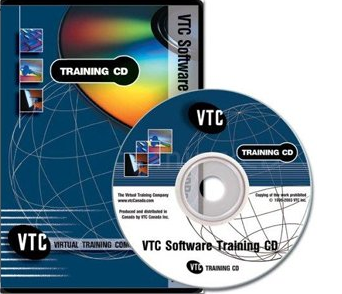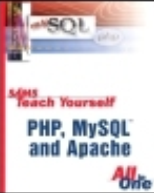
This book comprehensively explains all aspects of Google AdWords, an efficient advertising platform, including the channel composition of Google advertising, quality scores, keyword and advertising slogan strategies, post-tracking mechanisms, and the use of various auxiliary tools. Guide readers step by step to build a powerful Google search engine marketing strategy. The book is rich in cases, has a wide range of knowledge and a clear level, and is suitable for search engine marketing optimizers at all levels. <br /> This book is rich in cases, has a wide range of knowledge and has clear levels. It is suitable for search engine marketing optimizers at all levels, whether they are leaders of e-commerce companies, specific operators working on the front line of account optimization, marketing managers or individuals in SOHO. Webmasters/online earning practitioners can get sufficient intellectual support from this book. <br />
php e-book28112692018-03-01
1,000 Common Questions for ORACLE Idiots<br /> 1. What is the initial password after Oracle installation is completed? <br /> internal/oracle <br /> sys/change_on_install <br /> system/manager <br /> scott/tiger <br /> sysman/oem_temp<br /> 2. What is the initial default user and password for ORACLE9IAS WEB CACHE? <br /> administrator/administrator<br /> 3. How to create a database in oracle 8.0.5? <br /> Use orinst. If there is a motif interface, you can use orainst /m<br /> 4. How to create a database in oracle 8.1.7? <br /> dbassist<br /> 5. How to create a database in oracle 9i? <br /> dbca<br /> 6. What does the raw device in Oracle refer to? <br /> A raw device is a storage space that is directly accessed, bypassing the file system<br />
php e-book28104762018-03-01
<p> 1 A basic FORM </p> <p> 1. Select New, Form in the file to create a new FORM. </p> <p> 2. Create a data block a) Click the FORM in the navigator and select the data block wizard b) </p> <p> Enter the table name and click refresh to display the field names. c) Use to select all fields into the database items. d) Click Next and pay attention to using the default: "Please create the database first and then call the layout wizard." </p> <p> 3. Create a layout a) Enter the layout wizard b) Select the default layout wizard c) Select the display item and turn all available items into display items d) Select the table with the default frame style e) Specify the name of the frame and the number of displayed records f) Complete layout wizard </p>
php e-book28112942018-03-01
It is unsafe to use MYSQL_PWD. The "mysql" client uses the file named in the MYSQL_HISTFILE environment variable to save the command line history. The default value of the history file is "$HOME/.mysql_history", where $HOME is the value of the HOME environment variable. All MySQL programs take many different options, however, each MySQL program provides a --help option that you can use to get a complete description of the program's different options. For example, try mysql --help. You can override the default options for all standard clients with an options file. The following table briefly describes MySQL programs: myisamchk Usage program that describes, checks, optimizes, and repairs MySQL tables. make_binary_release Make a binary version of compiled MySQL. This can be sent using FTP to "/pub/mysql/Incoming" on the ftp.tcx.se website for the convenience of other MySQL users.
php e-book28117122018-03-01
HTML5+CSS3 W3C Specification <<Chinese Version>> Reference Manual (available for download) contains two chm e-books, one is the Chinese Reference Manual for HTML5, and the other is the Chinese Reference Manual for CSS3, classic, must be downloaded<br /> Many people say that IE browser does not support it now. Research is useless. But I think that even if IE9 comes out, IE6, 7, and 8 still do not support it. So the effect is the same now and in the future. All need to be improved.
php e-book28120272018-03-01![Scanned version of "PHP Complete Self-Study Manual" [PDF]](/static/imghwm/default1.png)
<span style="color:#222222;font-family:"font-size:14px;background-color:#FFFFFF;"> PHP is a network development language that can realize most network-based software development. For example, development Shopping websites, customer management systems, blogs, forums, etc. With the upgrade of PHP version, its application scope is becoming more and more extensive.</span><br /> <span style="color:#222222;font-family:"font-size:14px;background-color:#FFFFFF;"> Based on the characteristics of the PHP language, this book divides PHP learning into six parts. Start with basic knowledge , with graphics and codes, enables readers to gradually master PHP knowledge from the shallower to the deeper. The book not only introduces the syntax of PHP in detail, but also provides example code demonstrations for commonly used PHP functions. The example codes of these functions, It can help beginners understand the operation of PHP code and has strong practical value.</span><br /> <span style="color:#222222;font-family:"font-size:14px;background-color:#FFFFFF;"> Usually, most of the introductory books on programming languages are used to introduce the syntax of the language. And how to write code. This book will break this pattern. While introducing the PHP language, it also provides an in-depth explanation of its operating environment, related database software, development tools, code security, development process, development mode, and ajax technology. The introduction can make PHP beginners not only feel that it is a language, but also a language that can be directly applied to work after reading this book. </span>
php e-book28229542018-03-01![Scanned version of "How to Cultivation as a Java Programmer" [PDF]](/static/imghwm/default1.png)
<p> <strong>How to train Java programmers</strong> It was originally a training note prepared for newcomers in the foreign exchange IT department of Deutsche Bank. The book is divided into four parts. The first part comprehensively introduces the new features of Java 7. The second part explores key Java programming knowledge and technologies. The third part discusses new languages and multi-language programming on the JVM. The fourth part covers platform and multi-language programming. Knowledge put into practice. Starting from the introduction of the new features of Java 7, Java programmers' training covers the most important technologies in Java development, such as dependency injection, test-driven development and continuous integration, explores non-Java languages on the JVM, and explains in detail Multilingual projects, especially those involving the Groovy, Scala and Clojure languages. In addition, the book contains a large number of code examples to help readers understand the Java language and platform from practice. <br /> <span>How to practice as a Java programmer Table of Contents: </span> </p> <p> Part One Developing with Java 7<br /> Chapter 1 First introduction to Java 7<br /> 1.1 Language and Platform<br /> 1.2 Coin project: everything is concentrated<br /> 1.3 Modifications in the Coin project<br /> 1.4 Summary<br /> Chapter 2 New I/O<br /> 2.1 A brief history of Java I/O<br /> 2.2 The cornerstone of file I/O: Path<br /> 2.3 Processing directories and directory trees<br /> 2.4 NIO.2 file system I/O<br /> 2.5 Asynchronous I/O operations<br /> 2.6 Integration of Socket and Channel<br /> 2.7 Summary<br /> Part 2 Key Technologies<br /> Chapter 3 Dependency Injection<br /> 3.1 Knowledge injection: understanding IoC and DI<br /> 3.2 Standardized DI in Java<br /> 3.3 DI reference implementation in Java: Guice 3<br /> 3.4 Summary<br /> Chapter 4 Modern Concurrency<br /> 4.1 Introduction to Concurrency Theory<br /> 4.2 Block Structure Concurrency (Before Java 5)<br /> 4.3 Building blocks of modern concurrent applications<br /> 4.4 Control Execution<br /> 4.5 Branch/Merge Framework<br /> 4.6 Java Memory Model<br /> 4.7 Summary<br /> Chapter 5 Class Files and Bytecode<br /> 5.1 Class loading and class objects<br /> 5.2 Using method handles<br /> 5.3 Check class files<br /> 5.4 Bytecode<br /> 5.5 invokedynamic<br /> 5.6 Summary<br /> Chapter 6 Understanding Performance Tuning<br /> 6.1 Performance terminology<br /> 6.2 Pragmatic performance analysis method<br /> 6.3 What went wrong? Why we worry<br /> 6.4 A timing problem from hardware<br /> 6.5 Garbage Collection<br /> 6.6 JIT compilation of HotSpot<br /> 6.7 Summary<br /> Part 3 Multi-language programming on JVM<br /> Chapter 7 Alternative JVM Languages<br /> 7.1 Is Java too stupid? Pure slander<br /> 7.2 Language Ecology<br /> 7.3 Multi-language programming on JVM<br /> 7.4 How to choose a good non-Java language<br /> 7.5 JVM support for alternative languages<br /> 7.6 Summary<br /> Chapter 8 Groovy: Java’s Dynamic Companion<br /> 8.1 Getting started with Groovy<br /> 8.2 Groovy 101: Syntax and Semantics<br /> 8.3 Differences from Java--Newbie Trap<br /> 8.4 Groovy features that Java does not have<br /> 8.5 Cooperation between Groovy and Java<br /> 8.6 Summary<br /> Chapter 9 Scala: Simple but not simple<br /> 9.1 A quick tour of Scala<br /> 9.2 Can Scala be used in my project<br /> 9.3 Let the code bloom again with Scala<br /> 9.4 Scala Object Model: Similar but Different<br /> 9.5 Data structures and collections<br /> 9.6 Introduction to actors<br /> 9.7 Summary<br /> Chapter 10 Clojure: Programming Safer<br /> 10.1 Introduction to Clojure<br /> 10.2 Finding Clojure: Syntax and Semantics<br /> 10.3 Using functions and loops<br /> 10.4 Clojure Sequences<br /> 10.5 Interoperability between Clojure and Java<br /> 10.6 Clojure Concurrency<br /> 10.7 Summary<br /> Part 4 Multilingual Project Development<br /> Chapter 11 Test Driven Development<br /> 11.1 Overview of TDD<br /> 11.2 Test avatars<br /> 11.3 ScalaTest<br /> 11.4 Summary<br /> Chapter 12 Build and Continuous Integration<br /> 12.1 Meet Maven 3<br /> 12.2 Maven 3 Getting Started Project<br /> 12.3 Build Java7developer project with Maven 3<br /> 12.4 Jenkins: Meeting CI needs<br /> 12.5 Maven and Jenkins code metrics<br /> 12.6 Leiningen<br /> 12.7 Summary<br /> Chapter 13 Rapid Web Development<br /> 13.1 Problems with Java Web Framework<br /> 13.2 Criteria for selecting a web framework<br /> 13.3 Getting started with Grails<br /> 13.4 Grails Quick Start Project<br /> 13.5 Dive into Grails<br /> 13.6 Getting Started with Compojure<br /> 13.7 Am I an otter<br /> 13.8 Summary<br /> Chapter 14 Stay Excellent<br /> 14.1 Expectations for Java 8<br /> 14.2 Multi-language programming<br /> 14.3 Future concurrency trends<br /> 14.4 New directions for JVM<br /> 14.5 Summary<br /> Appendix A java7developer: Source code installation<br /> Appendix B glob pattern syntax and examples<br /> Appendix C Installing alternative JVM languages<br /> Appendix D Download and Installation of Jenkins<br /> Appendix E java7developer: Maven POM </p>
php e-book28119452018-03-01
Mingzi SQL environment building tutorial Table of contents:<br /> (1) SQL installation common sense<br /> (2) What is the difference between "additional database" and new "create database"<br /> (3) Database import and export<br /> (4) Database shrinkage and separation<br /> (5) Database backup/restore<br /> (6)(Common installation errors<br /> (7) How to test SQL<br /> (8) Convert ACCESS to SQL2000<br /> (9) The enterprise version can also be installed on XP
php e-book28147372018-02-28
"SQL Statement Study Guide" focuses on writing SQL statements and various queries, which is very practical!
php e-book28153172018-02-28
The process of installing SQL Server 2008 is basically the same as that of SQL Server 2005, except that some options have changed during the installation process. Of course, this is a revolutionary change for those who are only familiar with SQL Server 2000 installation.
php e-book28147942018-02-28
"Oracle Installation Manual", Linux environment configuration script, pdksh installation package, pictures and texts, Oracle 11g detailed installation tutorial, including Windows Server 2008 R2 SP1 64bit and RedHat Enterprise Linux 64bit.
php e-book28148882018-02-28
"MySQL in a Simple Language: Database Development, Optimization, Management and Maintenance" 2nd Edition - provides a detailed introduction to MySQL from the four aspects of database foundation, development, optimization, and management. Each part is an independent article, and each article includes multiple chapters. chapters. This book is practical-oriented, covers a wide range of content, and explains from the shallower to the deeper, making it suitable for readers of all levels. <br /> <br /> The basic chapter is mainly suitable for beginners of MySQL. It mainly covers the installation and configuration of MySQL, SQL basics, data types supported by MySQL, operators in MySQL, commonly used functions, and the use of graphical tools. <br /> <br /> The development chapter is mainly suitable for MySQL designers and developers. It mainly includes the selection of table types (storage engines), selection of appropriate data types, character sets, index design and use, views, stored procedures and functions, triggers, and transaction control. and locking statements, security issues in SQL, SQL Mode and related issues, etc.
php e-book28174252018-02-28
"SQL Meditations" uses a large number of examples to explain in detail the fundamental changes in thinking methods that must be faced in order to improve SQL programming skills - from thinking in procedural programming to thinking in terms of data sets. In addition, this book also discusses the application of lookup tables, views, auxiliary tables, and virtual tables in SQL programming, and uniquely describes how to correctly handle time values in the SQL system and other technical difficulties in SQL programming. <br /> <br /> Directory:<br /> Chapter 1 SQL is a declarative language, not a procedural language<br /> Chapter 2 Hardware, data volume and maintaining database<br /> Chapter 3 Data Access and Logging<br /> Chapter 4 Lookup Table<br /> Chapter 5 Auxiliary Table<br /> Chapter 6 View<br /> Chapter 7 Virtual Table<br /> Chapter 8 Complex functions implemented using tables<br /> Chapter 9 Tenses Table<br /> Chapter 10 Cleaning data using non-first normal form tables<br /> Chapter 11 Thinking in SQL<br /> Chapter 12 Group Characteristics<br /> Chapter 13: Turn technical specifications into code<br /> Chapter 14 Using Procedures and Function Calls<br /> Chapter 15 Row Numbering<br /> Chapter 16 Saving Calculated Data<br /> Chapter 17 Constraint Triggers<br /> Chapter 18 Procedural Solutions and Data-Driven Solutions
php e-book28149912018-02-28
"Oracle DBA Two-Day Crash Course" is very suitable for novices. It is easy to understand, with pictures and texts, and explains in detail the common operations of getting started with Oracle database. <br /> <br /> Directory:<br /> Chapter 1: Install Oracle software and build database<br /> Chapter 2: Getting Started with Oracle Enterprise Manager<br /> Chapter 3: Configuring the network environment<br /> Chapter 4: Managing Oracle Routines<br /> Chapter 5: Managing Database Storage Structure<br /> Chapter 6: Managing Users and Security<br /> Chapter 7: Managing Schema Objects<br /> Chapter 8: Performing Backups and Restores<br /> Chapter 9: Monitoring and Tuning the Database
php e-book28118602018-02-28- Courseware source code28127762018-02-28

Original name: PHP and MySQL for Dynamic Web Sites: Visual QuickPro Guide 2nd Edition, in English, introduces how to combine the PHP language and MySQL database to build a dynamic WEB website
php e-book28161702018-02-27
"Advanced Development Techniques and Examples of Web Pages" is a book published by Electronic Industry Press. The authors are Peng Xiaoming, Xiong Jining, Fan Hua, Huang Zhiliang, Qin Qing, etc.
php e-book28165592018-02-27
<p> 1. Select the image, submit the form, and the server will handle the upload and save the path. </p> <p> 2. Select the image, upload it, get the path, submit the form, and save the path </p> <p> 3. Select a picture, upload it to the server, obtain the picture from the server through some means, and save it locally. </p>
php e-book28165902018-02-27
In this tutorial, author James Gonzalez will use his web design expertise and years of teaching experience to show you how to quickly and easily create basic web pages and websites using Adobe Dreamweaver, Fireworks, and Flash. This is not just a process involving how to use these applications, it also includes the theory that needs to be understood as to why and when to use them.
php e-book28168832018-02-27
Book Description<br /> You own your own business. You have also created a website for your business that details the products or services that you offer, but it doesn't allow potential customers to purchase anything online. Don't risk losing business-learn to create a dynamic online environment using only three programs. PHP, MySQL and Apache are three popular open-source tools that can work together to help you create a dynamic website, such as an online shopping experience. Sams Teach Yourself PHP, MySQL and Apache All in One is a complete reference manual for all three development tools. You will learn how to install, configure and set up the PHP scripting language, use the MySQL database system, and work with the Apache Web server. Then you'll take it a step further and discover how they work together to create a dynamic website. Use the book and the included CD to create a simple website, as well as a mailing list, online address book, shopping cart and storefront. Updated to reflect the most recent developments in PHP and MySQL, including the final stable release of MySQL 5.0, you will open your website to limitless possibilities with Sams Teach Yourself PHP, MySQL and Apache All in One.<br />
php e-book28166412018-02-27


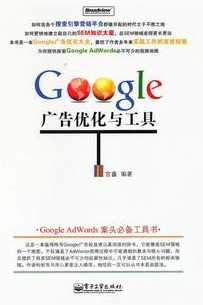

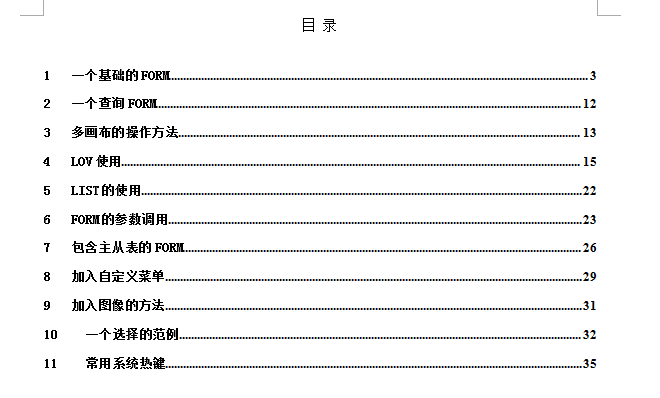
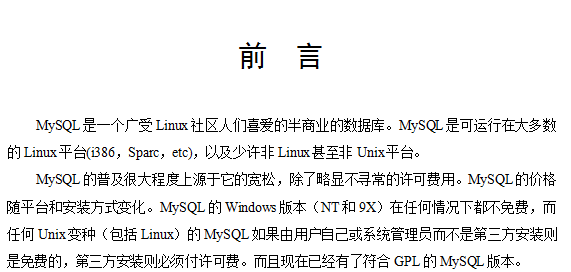
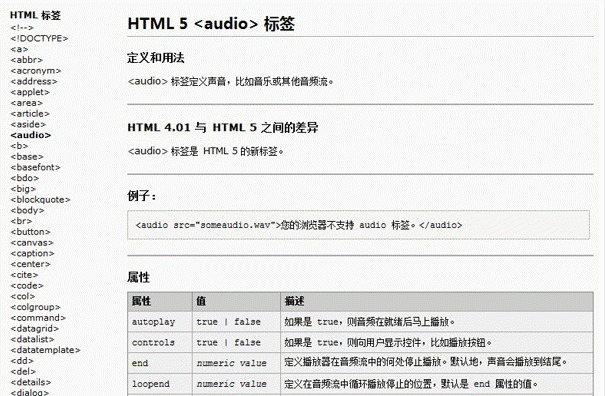
![Scanned version of "PHP Complete Self-Study Manual" [PDF]](https://img.php.cn/upload/webcode/000/000/000/5a97bc7acec41202.png)
![Scanned version of "How to Cultivation as a Java Programmer" [PDF]](https://img.php.cn/upload/webcode/000/000/000/5a97bc52283af560.png)
